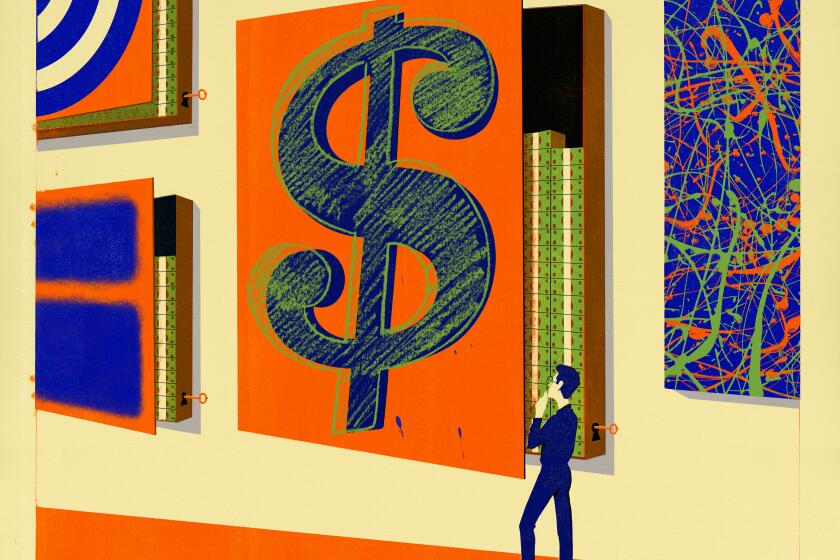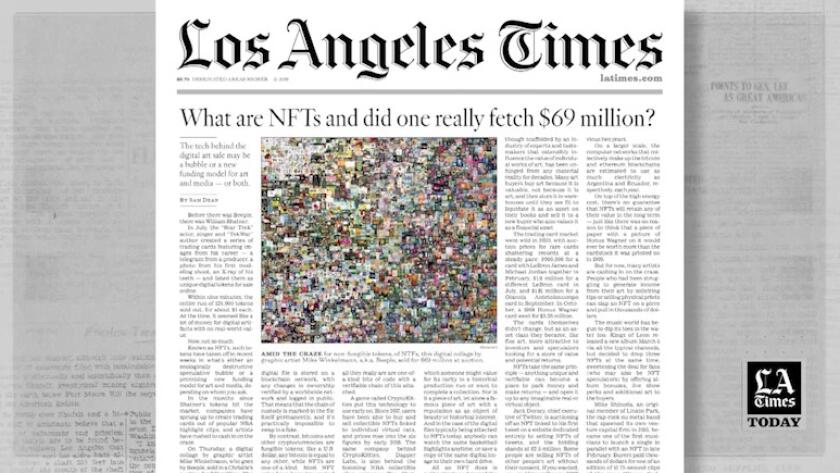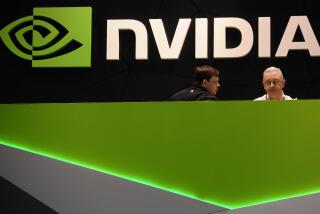$69 million for digital art? The NFT craze explained
- Share via
Before there was Beeple, there was William Shatner.
In July, the “Star Trek” actor, singer and “TekWar” author created a series of trading cards featuring images from his career — a telegram from a producer, a photo from his first modeling shoot, an X-ray of his teeth — and listed them as unique digital tokens for sale online.
Within nine minutes, the entire run of 125,000 tokens sold out, for about $1 each. At the time, it seemed like a lot of money for digital artifacts with no real-world value.
Now, not so much.
Known as NFTs, such tokens have taken off in recent weeks in what’s either an ecologically destructive speculative bubble or a promising new funding model for art and media, depending on whom you ask.
In the months since Shatner’s tokens hit the market, companies have sprung up to create trading cards out of popular NBA highlight clips, and artists have rushed to cash in on the craze. On Thursday, a digital collage by graphic artist Mike Winkelmann, who goes by Beeple, sold in a Christie’s auction for $69 million. The auction house declared Winkelmann “among the top three most valuable living artists,” but the escalating value of his work — as recently as last month pieces were going for single-digit millions — reflects a wider frenzy around all things NFT.
José Delbo, an 87-year-old comic artist, sold more than $1 million worth of Wonder Woman NFTs. Sales like his got the attention of DC Comics and Marvel. The debate over NFT winners and losers.
The basic idea of the technology is fairly straightforward. An NFT — which stands for non-fungible token — is like a certificate of authenticity for an object, real or virtual. The unique digital file is stored on a blockchain network, with any changes in ownership verified by a worldwide network and logged in public. That means that the chain of custody is marked in the file itself permanently, and it’s practically impossible to swap in a fake.
By contrast, bitcoins and other cryptocurrencies are fungible tokens; like a U.S. dollar, any bitcoin is equal to any other, while NFTs are one-of-a-kind. Most NFT sales to date have been transacted in cryptocurrencies such as ether and registered on the associated ethereum blockchain, though that’s not a requirement of the form.
The NFT file doesn’t contain the digital piece of art, or the video clip, or the Shatner card itself. It’s just a kind of contract, saying “the owner of this NFT owns this other digital file,” often with a link to the art file itself. NFTs could also be used as unforgeable digital tickets to events, or even ownership records for property sales — all they really are are one-of-a-kind bits of code with a verifiable chain of title attached.
A game called CryptoKitties put this technology to use early on. Since 2017, users have been able to buy and sell collectible NFTs linked to individual virtual cats, and prices rose into the six figures by early 2018. The same company behind CryptoKitties, Dapper Labs, is also behind the booming NBA collectible clips company Top Shot, which sold $230 million in NFTs linked to basketball highlights from October to January.
The appeal of NFTs to collectors is obvious: Instead of relying on forensics or patchy document records to prove that a piece of art or a trading card is the real deal, the authentication is coded into the NFT file itself.
The appeal of the NFTs currently being bought and sold for millions is less intuitive. An NFT file is not itself a physical trading card, which someone might value for its rarity in a historical production run or want to complete a collection. Nor is it a piece of art, let alone a famous piece of art with a reputation as an object of beauty or historical interest. And in the case of the digital files typically being attached to NFTs today, anybody can watch the same basketball highlights anytime, or save a copy of the same digital image to their own hard drive. All an NFT does is authenticate and record the provenance of the NFT itself, as with a limited-edition reproduction of a photograph — but when the art object attached to the NFT is freely available, there’s no inherent reason why it would have any value at all.
That’s where the collective imagination of the market comes in. Lacking intrinsic value, NFTs approximate the way that art and trading cards can function as financial instruments for investors.
The elite art market, though scaffolded by an industry of experts and tastemakers that ostensibly influence the value of individual works of art, has been unhinged from any material reality for decades. Many art buyers buy art because it is valuable, not because it is art, and then store it in warehouses until they see fit to liquidate it as an asset on their books and sell it to a new buyer who also values it as a financial asset.
Give them your fine art, and they’ll lend you money -- seven figures and maybe more.
The trading card market went wild in 2020, with auction prices for rare cards shattering records at a steady pace: $900,000 for a card with LeBron James and Michael Jordan together in February, $1.8 million for a different LeBron card in July, and $1.81 million for a Giannis Antetokounmpo card in September. In October, a 1909 Honus Wagner card went for $3.25 million.
The cards themselves didn’t change, but as an asset class they became, like fine art, more attractive to investors and speculators looking for a store of value and potential returns.
NFTs take the same principle — anything unique and verifiable can become a place to park money and make returns — and open it up to any imaginable real or virtual object. Jack Dorsey, chief executive of Twitter, is auctioning off an NFT linked to his first tweet on a website dedicated entirely to selling NFTs of tweets, and the bidding stands at $2.5 million. Some people are selling NFTs of other people’s art without their consent. If you wanted, you could try selling an NFT for the moon.
But this creation of value out of thin air does come with real costs. Processing cryptocurrency transactions takes a massive amount of computing power, which has raised environmental concerns about the boom. Joanie Lemercier, an eco-conscious French artist who closely tracks his studio’s energy usage, was dismayed to learn that the sale of just six of his own pieces as NFTs used more electricity in one day than he had for the previous two years. On a larger scale, the computer networks that collectively make up the bitcoin and ethereum blockchains are estimated to use as much electricity as Argentina and Ecuador, respectively, each year.
On top of the high energy cost, there’s no guarantee that NFTs will retain any of their value in the long term — just like there was no reason to think that a piece of paper with a picture of Honus Wagner on it would ever be worth more than the cardstock it was printed on in 1909.
But for now, many artists are cashing in on the craze. People who had been struggling to generate income from their art by soliciting tips or selling physical prints can slap an NFT on a piece and pull in thousands of dollars.
The music world has begun to dip its toes in the water too. Kings of Leon released a new album last Friday via all the typical channels, but decided to drop three NFTs at the same time, sweetening the deal for fans (who may also be NFT speculators) by offering album bonuses, live show perks and additional art to the buyers.
Mike Shinoda, an original member of Linkin Park, the rap-rock nu metal band that spawned its own venture capital firm in 2015, became one of the first musicians to launch a single in parallel with an NFT in late February. Buyers paid thousands of dollars for one of an edition of 10 75-second clips of the song “Happy Endings,” accompanied by an animated illustration, with proceeds going to ArtCenter College of Design in Pasadena.
In Shinoda’s case, the buyers also got a physical signed copy of the album art in the mail. But the real world is beside the point. “Just embrace it. It’s not about the physical item,” Shinoda said in an interview with Input Magazine. “It’s about the concept of ownership.” Sure, why not?
- Share via
Watch L.A. Times Today at 7 p.m. on Spectrum News 1 on Channel 1 or live stream on the Spectrum News App. Palos Verdes Peninsula and Orange County viewers can watch on Cox Systems on channel 99.









